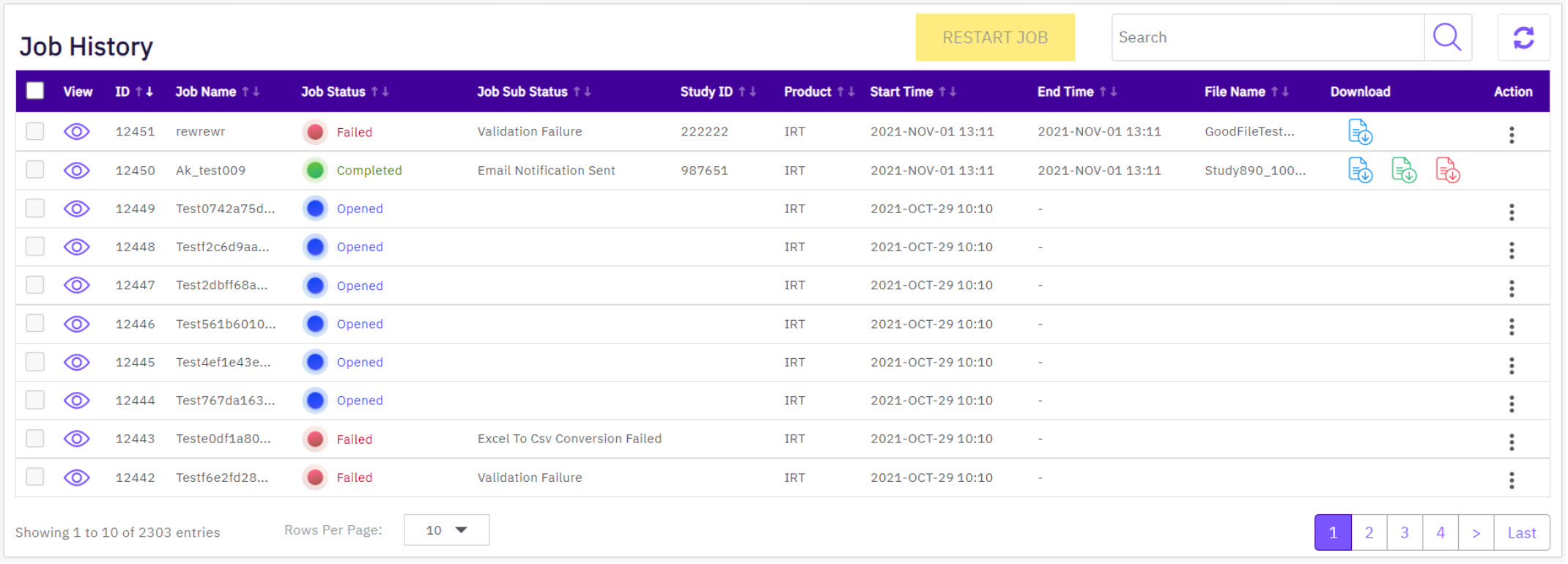Home Page
You can view and understand the Bulk upload user interface and callouts that highlights the components on the interface.

The table below explains each UI component from the above image pointing out in numbers.
| No. | Description |
|---|---|
| 1 |
User Profile menu. This menu contains below listed options:
|
| 2 | Switch between Bulk upload and View log apps.
|
| 3 | All the notifications that you have received. |
| 4 | You can interact with your files in the tabs, or access help. |
| 5 | Shows the number of jobs in particular status such as Opened, Upload completed, In-Progress, Completed, Aborted, and Failed. |

| Name/Icon | Description |
|---|---|

|
Administrators can use Restart Job to restart a failed job. |

|
A Search returns a list of records that satisfy the search criteria. |

|
Use Refresh to update the contents in the Job History. |

|
Administrators can select one or more jobs to take the same action on them. |
View

|
Administrators can view job details such as Status, Failure Details, Status History, and other details. |
| ID | Each job is identified using unique ID. |
| Job Status | You can view following status of jobs:
|
| Job Sub Status | Administrators can view the last completed step in the progress of the job. |
| Product | Displays product name to which the job belongs to. |
| Domain | Displays domain name. |
| Start Time | Displays the time when the job is processed <timezone> |
| End Time | Displays end time when the job is completed <timezone> |
| Download | Download the .csv file of successful and failed job files. |
Action

|
Available action items that can be performed on a job. |
| Pagination | Pagination menu contains below options:
|
